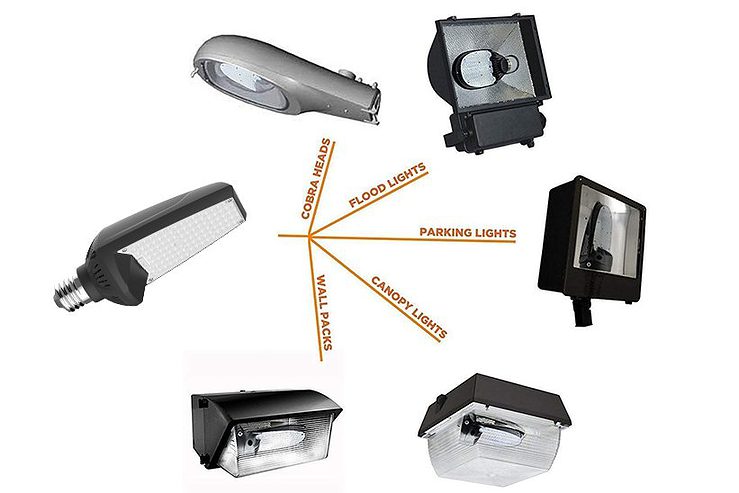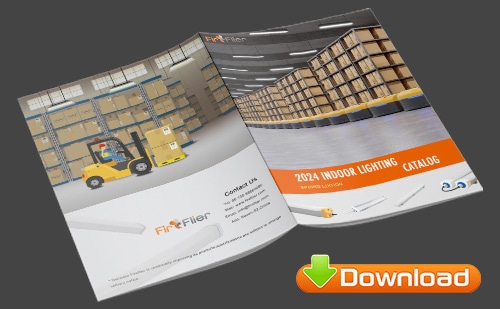Have you been thinking about an LED retrofit for your facility or property? Not sure how to go about it? You came to the right place. Here’s a primer on getting your facility up to date with modern lighting.
What is an LED Retrofit?
Retrofitting your facility means that you’re adding something new (such as technology, component, or accessory) that the building didn’t previously have or that wasn’t a part of the original construction. The term “retrofit” is very much a synonym with the term “conversion.” In the case of lighting, most retrofits that are happening today are LED lighting retrofits.
Not all lighting fixtures are created equally.
In large lighting installations, like commercial lighting applications found in commercial offices, one lighting fixture type is often used repeatedly in a vast grid.
In industrial areas, metal halide fixtures or high-pressure bulbs are used popularly. Like all traditional lighting, these fixtures have dimensions that allow for traditional bulbs to fit, heat to dissipate, drivers and wiring to sit, and anchor points for attaching or placing the fixture in its desired location.
Because LED lighting is lighter, thinner, integrated, and brighter than a traditional fixture—like our Retrofit Bulbs— it can require a kit to correctly refit the older fixture.
An LED retrofit kit is usually little more than an LED light with an integrated connection allowing the new lamp to easily sit in the old fixture.
Why LED Lighting Retrofits?
LED lights are replacing traditional lighting technology across a wide spectrum of lighting applications. They are useful for interior lighting, exterior lighting, and small lighting in mechanical applications.
What are the advantages of Retrofit bulbs?
There are plenty of advantages that make LED Retrofitting so popular:
1, Reduces Energy Costs
LED lights are a huge saver when it comes to energy. An LED retrofit can save 70% of the energy used compared to a metal halide or other HID light fixtures. Our current LED high bay lights are running up to 190 lumens per watt in the best price ranges, but the efficiency keeps growing while the cost keeps decreasing. In a few years, 250+ lumens per watt may be the average output of new LED fixtures at a reasonable price.
2, Varied Retrofit Options
There is also a wide range of retrofitting options available. You can just screw LED corn bulbs into a socket that already exists to replace a light bulb featuring with older, outdated technology. In case the prior lamp had ballast, it typically must be bypassed or removed. Avoid using LED bulbs that operate with ballast that is already present as the ballast can consume as high as ten percent of extra energy which is completely wasted since it is not needed. It also reduces the longevity of the driver and the LED lamp. And when those ballasts fail eventually, you’ll need to get in there and remove or bypass it at that time, so save yourself the energy wasted and get rid of the ballast at the start when you convert to LEDs.
It is important to note that the fixture must have enough space to get cooled easily. There should ideally be a minimum space of 1 to 2 inches around an LED corn bulb for effective cooling. Make sure to check the recommendation of the manufacturer for minimal interior measurements of the fixture that a corn bulb is being installed in. Know that not every corn bulb may be used in an enclosed fixture, typically anything over 150 watts needs to be in an open fixture for proper cooling.
Corn bulbs in varied designs let various kinds of retrofitting options be possible. An Omni-directional bulb can be replaced directly with 360-degree “corn cobs” bulbs. In many fixtures, reflectors are used for the proper distribution angle of lights. No matter what kind of lighting technology is used, some amount of lights gets lost in reflectors. Directional corn bulbs often called paddle bulbs, focus the light where it is needed so no reflectors are needs, therefore more effectively using the light produced. Lower wattages can be used since lumens are not lost in the reflectors. Lastly, reflectors be removed in case the fixture lacks proper space for a 360-degree corn bulb with the reflectors in place.
3, Retrofit Kits
A retrofit kit, much like a paddle bulb can be installed and uses directional light so no reflector is needed. Retrofit kits also use full size LED drivers, or power converters, which adds longevity and function as these can be dimmed and often have surge protection built-in. LED corn bulbs, on the other hand, do not handle dimming properly with current technology and trying to do so can lead to premature failure, flicker, and other problems. Thus, avoid manufacturers who promote LED corn bulbs that are dimmable and check into other options if dimming is a must for your application.
4, Easier to Replace
It must be kept in mind that a few retrofitting tasks might be labor-intensive, particularly when there is a need for a lift. It can make it better to spend some for an entire fixture and update your existing lighting instead of retrofitting. Typically, however, Retrofit bulbs happen to be more inexpensive than entire fixtures. At times, retrofitting may be as basic as removing the screw of a bulb and placing another bulb in that position. This minimizes the costs of labor as much as possible.
5, Inexpensive
Sometimes the full replacement of a fixture is not an option, especially with decorative fixtures, and the only option is retrofitting. You can save thousands of dollars when you retrofit the existing light fixtures with the superior efficiency of LED lighting. What you pay upfront to make the switch to LEDs will pay for itself in the long term.
6, Quick-fix Illuminant Solutions
The use of retrofit LED bulbs happens to be an easy and fast way to save expenses on electricity without spending on a full overhaul of the infrastructure. LED corn bulbs and retrofit kits are an easy way to make the switch to LEDs from older technologies at a lower cost than completely replacing a fixture and the labor to install can be as simple as screwing in a bulb. If you have the money and want ultra-high efficiency in your lighting, go out and get a new, high-end fixture designed specifically for your application. But for a simple install at a budget price, retrofitting is the way to go.
Did you know that only 10% of the cost of operating a building over its lifetime is spent on the actual purchase of the facility? The remaining 90% is made up of various operating expenses. Much of this is an energy expense (heating, electricity) while other expenses involve structural maintenance. Of the electricity expenses, lighting is by far the largest one and upgrading your facility to LEDs is one of the smartest investments you can make. For more information or if you are interested in working with a certified lighting expert please contact Fireflier Lighting. We can handle your LED retrofit project from A to Z.


